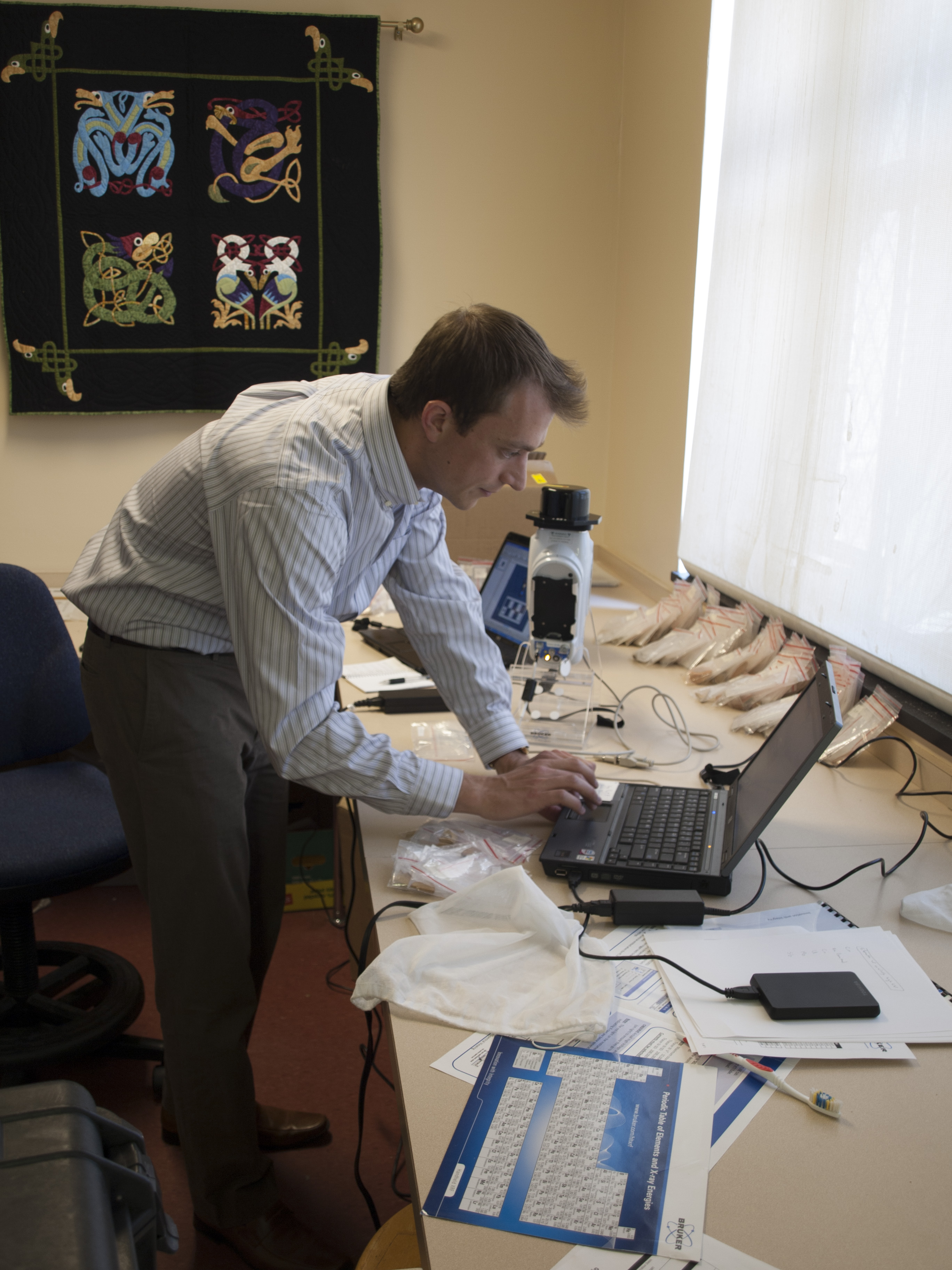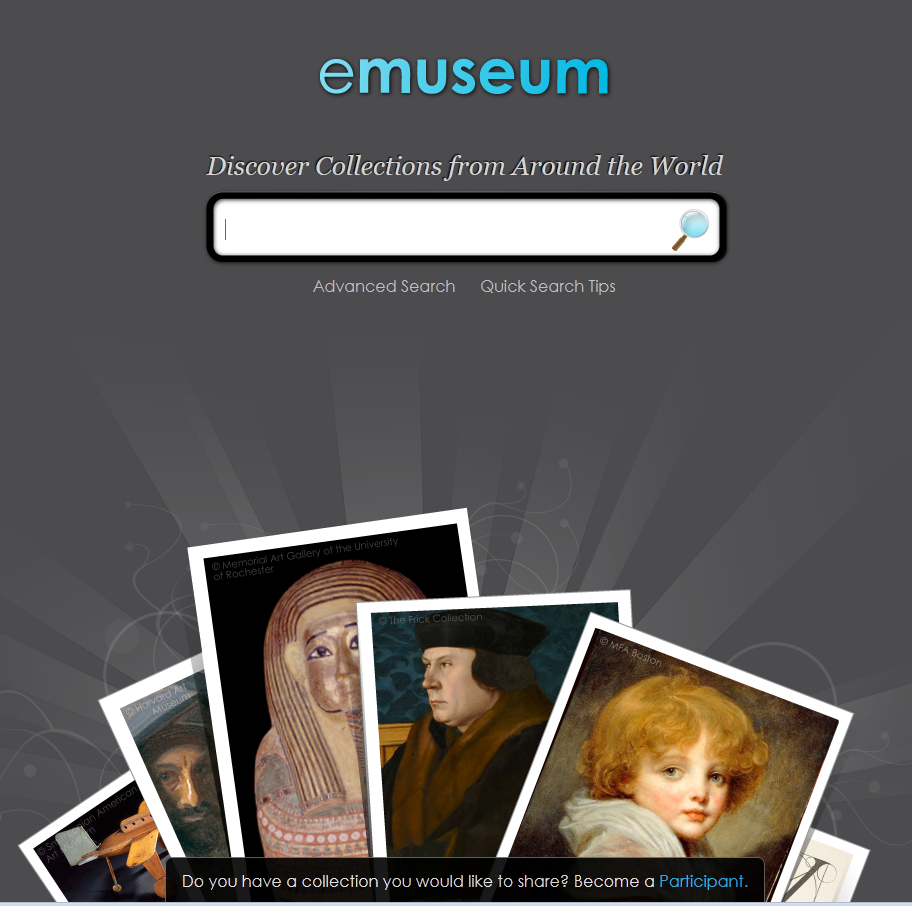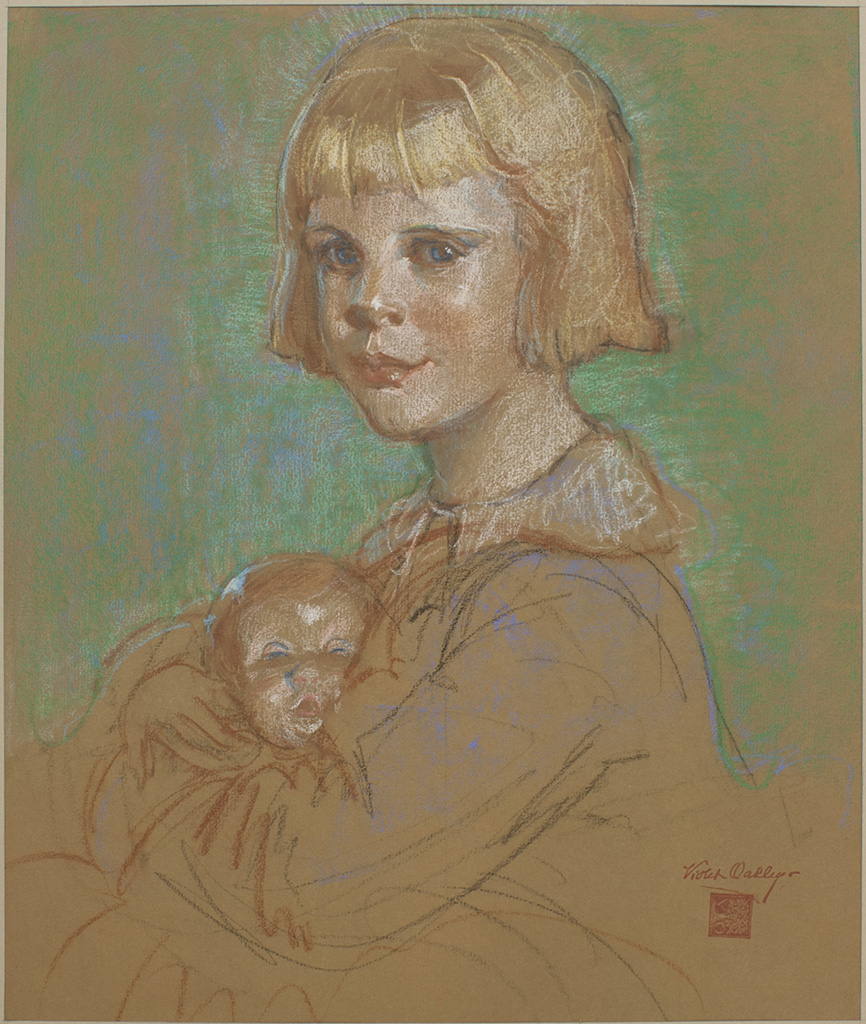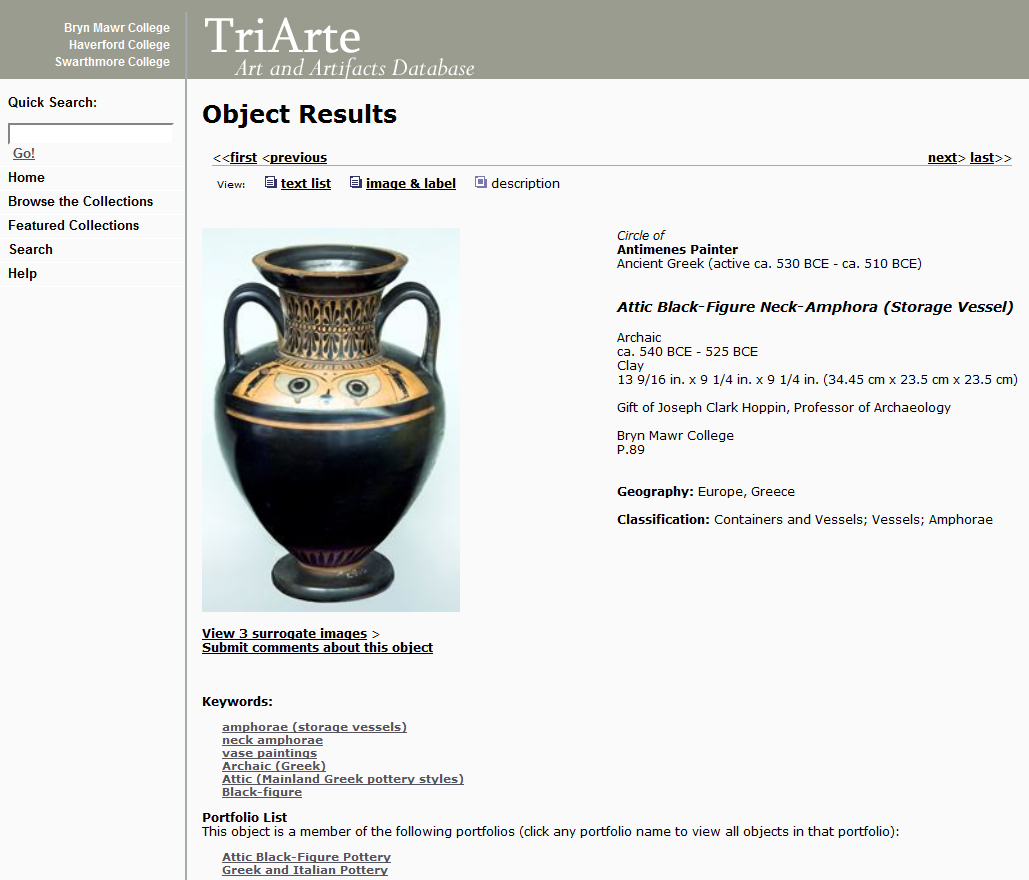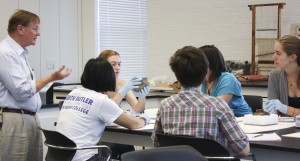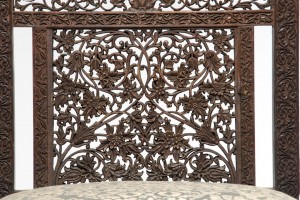Steven Karacic is currently working on a dissertation is addressing the Late Bronze Age IIA (LB IIA) pottery from the site of Tarsus-Gozlukule. The pottery, specifically the so-called Hittite Monochrome Ware (HMW), is often used as evidence for the Hittite political expansion into the region of Cilicia in the latter half of the second millennium BCE. The broader historical narrative interprets HMW as the standardized product of an economy centralized under Hittite imperial bureaucracy. His dissertation will test this narrative by way of mineralogical and geochemical analyses that speak to the production locales of the LB IIA pottery. At present, he is conducting geochemical tests with a portable XRF machine in special collections at Bryn Mawr College.
Author Archives: mweldon
Collections Management & Practices; an AASLH Workshop Comes to Bryn Mawr College
Collections Management & Practices
July 11-12, 2013
Bryn Mawr, PA
Host: Bryn Mawr College
Cost: $270 members/$345 nonmembers; $40 discount if fee is received by June 5.
Participants will learn about their institution’s responsibility toward its collection, the necessary policies and procedures, and the best practices of collection management. During lively group discussions and hands-on activities, participants will become familiar with current issues and trends to better understand how collections fit within the context of history organizations. Participants will explore other topics including the role of collections in exhibition and interpretation, the basic steps of collections management from acquisition to disposal, professional standards and ethics, conservation on a shoe-string budget, as well as learning about the multitude of resources available for collections preservation.
Who Should Attend:
This workshop is targeted to new professionals and dedicated volunteers with responsibility for collections.
What Participants Said: “Structured well–time to get to know each other, time to interact about specific problems.” “Particularly enjoyed the participation exercise, followed by practical ideas.” “The thinking through of problems with mission statements, pest problems, and interpretation was helpful.” “I was able to see the ‘big picture’ instead of focusing on my own small concerns.”
StEps Connections:
This workshop may help institutions achieve the standards in the Mission, Vision, and Governance, Management, and Stewardship of Collections sections of AASLH’s StEPs program.
Travel Information:
Bryn Mawr College is just outside of Philadelphia. More information will be coming soon.
Instructors:
Dr. Vicki L. Berger has been a faculty member of the American Association for State and Local History for the long-running Collection Care Workshop for several years. Berger retired from North Carolina state government service in 2003. She served as Curator of Costume and Textiles and Collections Management Section Chief at the North Carolina Museum of History. During that time, she developed and taught Introduction to Museology, the beginning graduate level public history course, at North Carolina State University. Since moving to Phoenix, AZ in 2003, she has worked at the Arizona Historical Society Museum at Papago Park and the Phoenix Museum of History. In addition to her AASLH service, Berger is active in several professional organizations. She is Secretary of the International Council of Museums (ICOM) Costume Committee and travels internationally to participate in the annual meetings. A long-time board member of the Costume Society of America, Berger co-chaired the 2009 national symposium which was held in Phoenix, AZ. She also serves on the boards of the Central Arizona Museum Association, Museum Association of Arizona, and the Costume Society of America Southwest Region. She and costume colleague Sally Queen published Clothing and Textile Collections in the United States: A CSA Guide in 2006. Berger earned her bachelor’s and master’s degrees at the University of Arizona and her Ph.D. at Florida State University.
Helen Alten, is the Director of Northern States Conservation Center and its chief Objects Conservator. For nearly 30 years she has been involved in objects conservation. She completed a degree in Archaeological Conservation and Materials Science from the Institute of Archaeology at the University of London in England. She has built and run conservation laboratories in Bulgaria, Montana, Greece, Alaska and Minnesota. She has a broad understanding of three-dimensional materials and their deterioration, wrote and edited the quarterly Collections Caretaker, maintains the popular www.collectioncare.org website, was instrumental in developing a state-wide protocol for disaster response in small Minnesota museums, and is always in search of the perfect museum mannequin. She has published chapters on conservation and deterioration of archeological glass with the Materials Research Society and the York Archaeological Trust, four chapters on different mannequin construction techniques in Museum Mannequins: A Guide for Creating the Perfect Fit (2002), preservation planning, policies, forms and procedures needed for a small museum in The Minnesota Alliance of Local History Museums’ Collection Initiative Manual, and is co-editor of the penultimate book on numbering museum collections (still in process) by the Gilcrease Museum in Oklahoma. Helen Alten has been a Field Education Director, Conservator, and staff trainer. She began working with people from small, rural, and tribal museums while as the state conservator for Montana and Alaska. Helen currently conducts conservation treatments and operates a conservation center in Charleston, WV and St. Paul, MN.
Tentative Agenda:
The workshop will begin with registration at 8 a.m. on Thursday and conclude at 5 p.m. on Friday. Click here for a copy of the 2011 workshop agenda. Please note that this agenda is subject to change. A final workshop agenda and participant materials will be distributed at registration.
To register: http://www.aaslh.org/collwork.htm
emuseum.net
Cataloging Violet Oakley portraits of Quita Woodward:
Bryn Mawr College’s Madonna and Child, by Romare Bearden, on Exhibit in New York
Today, February 15, 2013, Ashe to Amen: African Americans and Biblical Imagery Opens at the Museum of Biblical Art. One of the paintings in the exhibition, Madonna and Child by Romare Bearden (above), is on loan from Bryn Mawr College Special Collections. The exhibition will be open until May 26, 2013 at MOBiA and then it will travel to the Reginald F. Lewis Museum of Maryland African American History & Culture June 22 – September 29, 2013; and the Dixon Gallery and Gardens October 20, 2013 – January 5, 2014.
More information on the exhibition can be found at: http://mobia.org/exhibitions/ashe-to-amen#slideshow1
More information about Madonna and Child by Romare Bearden can be found at: http://triarte.brynmawr.edu/Obj164044
Triarte is Live
TriArte – What do YOU want to see?
We are in the process of preparing to remove the IP restrictions from TriArte which will allow people outside of the tri-college community access to our Art and Artifacts Database. As part of this process we are evaluating what information should be displayed. Currently we display information such as: Artist, Artist Life Dates, Creation Date, Period/Era/Dynasty, Title, Geographic Region of Origin, Donor, BMC Accession Number, Classification, Keywords and Images.
Is the information we are displaying useful to you? Below is a sample, a screen-shot of P.89 an Attic Black-Figure Neck-Amphora (Storage Vessel) as currently displayed in TriArte.
We’d like to hear from you. What additional information would you like to see? We have been considering adding the following information:
- Publications citing the object
- Exhibitions containing the object
- Description of the object: for example the description for P.89 an Attic Black-Figure Neck-Amphora (Storage Vessel) could be: This amphora’s shoulders are painted with a pair of eyes with eyebrows, framed by standing male figures holding spears. The decoration is completed by the painted nose and the handles, which were called “ears” in ancient Greek. The amphora is a striking example of the Greek tendency to anthropomorphize pottery; by the Late Archaic period, the eye motif was quite common on drinking cups. When the eye motif is found on amphorae, it may suggest that they, too, were used in a symposium setting. This vase belongs to a small group of amphorae with similar decoration by a painter in the circle of the Antimenes Painter, one of the major vase-painters of his time.
- Location for the object if currently on public view
- Related web resources such as the J. Paul Getty Museum’s Video on Making Greek Vases: http://www.getty.edu/art/gettyguide/videoDetails?segid=373.
ANTH B204-001 North American Archaeology
Today students in North American Archaeology, taught by Professor Richard Davis, used objects from special collections to learn how to examine them. Information about the manufacture and use of the artifacts was gleaned from this visual examination. Students will continue to work with our special collections throughout this course.
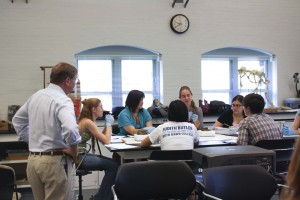 In this photo students are examining a stone blade, one of over 1600 stone tools in the college’s holdings.
In this photo students are examining a stone blade, one of over 1600 stone tools in the college’s holdings.
Among the other objects used for today’s class were pottery, pipes and one stone game piece called a “chunky stone”. For more information about the game Chunkey see: http://en.wikipedia.org/wiki/Chunkey.
Interested in knowing more about the anthropology collection?…..
The anthropology collection includes more than 8,000 objects from around the world. Frederica de Laguna (Class of 1927), the founder of Bryn Mawr’s Anthropology Department, was instrumental in the creation and growth of this important collection in the 1950s and 1960s.
The largest portion of the anthropology holdings is the William S. Vaux Collection, a gift from the Academy of Natural Sciences of Philadelphia, which includes archaeological artifacts from North, Central, and South America and pre-historic Europe.
Other important collections include the Twyeffort-Hollenback Collection of Southwest Pottery and Native American Ethnography, the George and Anna Hawks Vaux ’35, M.A. ’41 Collection of Native American Basketry; the Ward and Miriam Coffin Canaday ’06 collection of Pre-Columbian ceramics and Peruvian textiles; and pieces collected in Oceania by retired anthropology professor Dr. Jane Goodale.
African Collection
One of the highlights of the anthropology collection is the African collection, which has grown rapidly since 1990, when Bryn Mawr alumna Margaret Feurer Plass ’17 bequeathed to the college select pieces from her private collection. A world-renowned Africanist, Plass traveled and collected for forty years. A major addition to the collection during the 1990s was the donation of more than 270 African art objects by Mace Neufeld and Helen Katz Neufeld ’53. Bryn Mawr Professor of Anthropology Philip Kilbride has supplemented these collections with ethnographic objects he collected in East Africa in the 1960s.
Asian Art Collection
The Asian holdings include Helen B. Chapin’s (Class of 1925) collection of Chinese, Korean, and Japanese scrolls, porcelains, lacquerware, terracottas, bronzes, and wood and stone artifacts. Also included in the Asian collection are imperial Japanese art and artifacts from the Elizabeth Gray Vining (Class of 1923) Collection, which she assembled while she was tutor to the Crown Prince (present Emperor) of Japan.
One of Bryn Mawr College’s Lockwood de Forest Chairs Travels to the Virginia Museum of Fine Arts
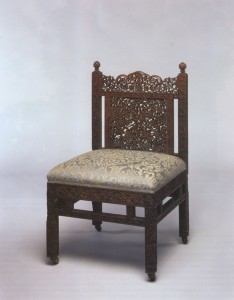 Later this month a side chair, ca. 1881-1886, designed by Lockwood de Forest will go to the Virginia Museum of Fine Arts on loan for one year, with the option to renew. The side chair, will be on exhibition in the galleries at the Virginia Museum of Fine arts as early as this Fall. Below is a detail of the of the design on the chair.
Later this month a side chair, ca. 1881-1886, designed by Lockwood de Forest will go to the Virginia Museum of Fine Arts on loan for one year, with the option to renew. The side chair, will be on exhibition in the galleries at the Virginia Museum of Fine arts as early as this Fall. Below is a detail of the of the design on the chair.
For more information about Lockwood de Forest and additional works designed by him in Bryn Mawr’s Collection see:Lockwood de Forest: Furnishing the Gilded Age with a Passion for India by Roberta A. Mayer.
Renaissance Relief Reinstalled
Yesterday a reproduction plaster relief of the Tabernacle or Ciborium in the Medici
Chapel Church of Santa Croce in Florence was re-installed on the 2nd floor of Taylor Hall. It is a late 19th century reproduction after the original mid-15th century work by Mino da Fiesole (1429 – 1484).
To safely install the four-part plaster relief, a metal armature was constructed to support each section separately. This insures that the weight of each piece is supported by the structure and not by the sections of the relief beneath. The armature was installed first.
Then each section of the relief was installed one at a time, starting at the bottom, by professional art installers.

